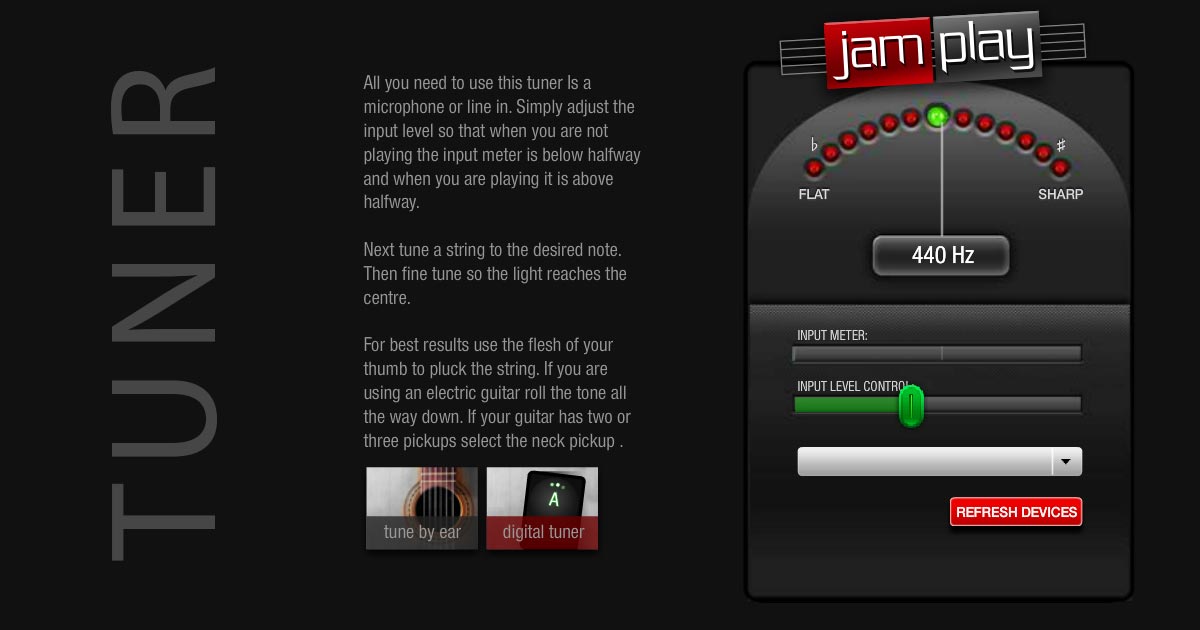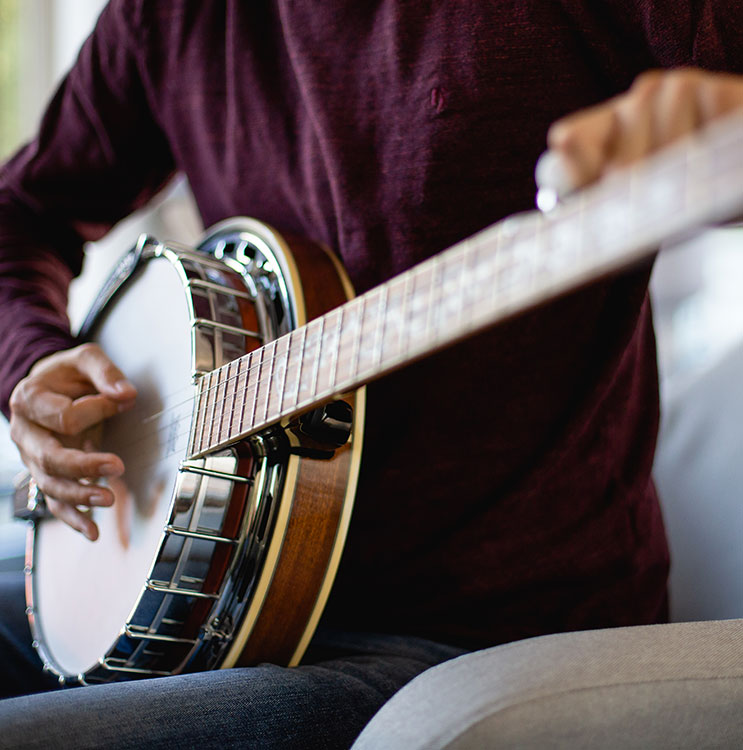

The reference pitch A4 can be adjusted in the range of 438 Hz to 445 Hz.The online tuner does not require a high quality microphone, a low-end model will suffice.If you have a desktop computer, a microphone is necessary.If you have a laptop, it is likely that it has a built in microphone.For best results, make sure your microphone is not too far away from your instrument.Repeat this process with the other strings.Ĭ0 C#0/Db0 D0 D#0/Eb0 E0 F0 F#0/Gb0 G0 G#0/Ab0 A0 A#0/Bb0 B0 C1 C#1/Db1 D1.B9 Once done, continue to adjust the string so that no yellow bar is displayed. If the note displayed is not E2 but another one lower (respectively higher), tighten (respectively loosen) the string till tuner displays E2. Pick low E string (fat string) which must be tuned to the E2 note.

The notes corresponding to each string appear : E2 A2 D3 G3 B3 E4. Then continue to act on your instrument so that no yellow bar is displayed. To help you, many tunings are listed : guitar, 12 string guitar, bass guitar, 5 string bass guitar, 6 string bass guitar, 4 string banjo, 5 string banjo, mandolin, ukulele, violin, viola, cello, double bass.Īct on your instrument so that the note displayed is the one you want to tune to. However, whenever yellow bars appear, the sound played isn't in tune with the displayed note.įor tuning your instrument, you have to know the name of the note and its octave (example : E2). If several green bars appear but no yellow bar, then the sound played is still in tune with the displayed note. A nicely tuned banjo can make your music sound a lot better and help you greatly while youre are just getting the hang of finger placement for notes. The good news is, the more you do it, the easier it becomes. Tuning your banjo can be a difficult task for you if you are just beginning banjo. If only central green bar appears this means that the sound played is perfectly in tune with the displayed note. This is for a standard 5-string Banjo, in gDGBd tuning. It analyzes the sound captured by the microphone then displays the nearest note to this sound and the distance between them. Therefore, it allows you to tune any musical instrument : guitar, bass guitar, ukulele, banjo, mandolin, violin, viola, cello, double bass. The online tuner is chromatic and uses your microphone.
#Banjo tuner online microphone download#
But these are also locked unless you’re willing to subscribe.You have to download Flash Player to access the content of this website. Because Guitar Tuna is created by Yousician, there are lessons, games, and song instructionals available in the app. The Tools feature includes a simple metronome, and a library of basic chord diagrams. In addition to the metronome, the app includes many additional features, most of which require a subscription. (For example if your G string is currently playing a "C#," does that mean you need to go up to the higher G or down to the lower G?) While the chromatic tuner may involve a little bit of ear training and knowledge of the music alphabet, the guitar tuna app simply allows you to click the string you are trying to tune and will let you know which direction to tune! I've found that beginner musicians are often confused by the chromatic tuner, especially when their instrument is extremely out of tune. Unfortunately, the chromatic tuner is a premium feature, along with alternate tunings of the instruments listed above.
#Banjo tuner online microphone free#
The free version of Guitar Tuna includes guitar, ukulele, bass, violin, viola, cello, mandolin, balalaika, and 5-string and 4-string banjo. The app lets you choose from a variety of different instruments, then shows which note your tuning by displaying an image of the headstock (or scroll) that matches your instrument. Guitar Tuna is great for beginner string players.


 0 kommentar(er)
0 kommentar(er)
